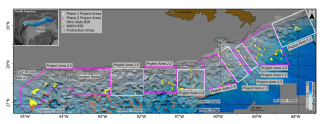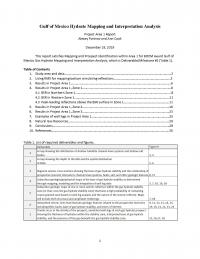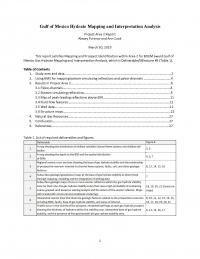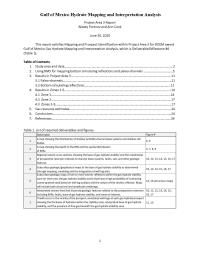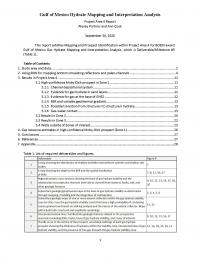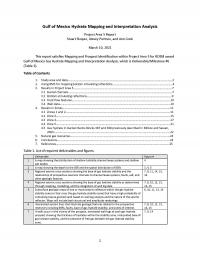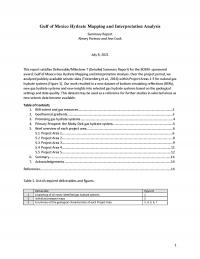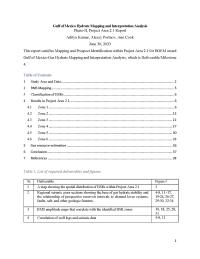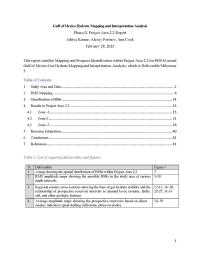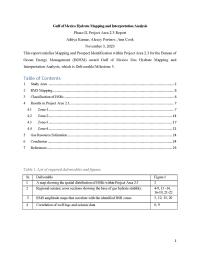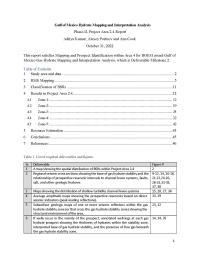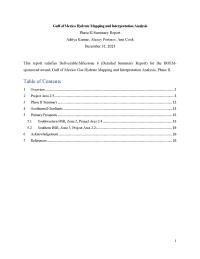The Ohio State University, through contracts 140M0119P0041and 140M0122P0017, prepared an analysis of natural gas hydrate systems on the Gulf of Mexico Outer Continental Shelf (OCS). The goal of the project was to provide BOEM with an understanding of the distribution of potential methane hydrate reservoirs at the prospect level in the Gulf of Mexico to assist BOEM scientists with future methane hydrate resource assessments. The project utilized publicly available seismic data from the National Archive of Marine Seismic Surveys and publicly available wellbore data from the OCS. The project was conducted in two phases resulting in the identification of 72 bottom simulating reflection (BSR) systems covering approximately 1,700km2. The first phase resulted in the identification of 22 new BSR systems covering a total of ~330 km2 and the second phase resulted in the identification of 50 new BSR systems over an area of ~1,364 km2. The map above shows the location of both Phase 1 and Phase 2 project areas and the distribution of BSRs on the Gulf of Mexico slope.
Results from this collaborative effort have been published in the following peer reviewed journal articles:
Kumar, A., Cook, A.E., Portnov, A., Skopec, S., Frye, M., and Palmes, S., (2024) Bottom simulating reflections across the northern Gulf of Mexico slope. Journal of Marine and Petroleum Geology, doi: 10.1016/j.marpetgeo.2024.106870
Portnov, A., Cook, A.E., and Vadakkepuliyambatta, S., (2021) Diverse gas composition controls the Moby-Dick gas hydrate system in the Gulf of Mexico. Geology. doi: 10.1130/G49310.1
Portnov, A., Santra, M., Cook., A.E., and Sawyer, D.E, (2020) The Jackalope gas hydrate system in the northeastern Gulf of Mexico. Journal of Marine and Petroleum Geology, 111. doi: 10.1016/j.marpetgeo.2019.08.036
The results of Phase 1 and Phase 2 are summarized in the reports linked in the tabs:


